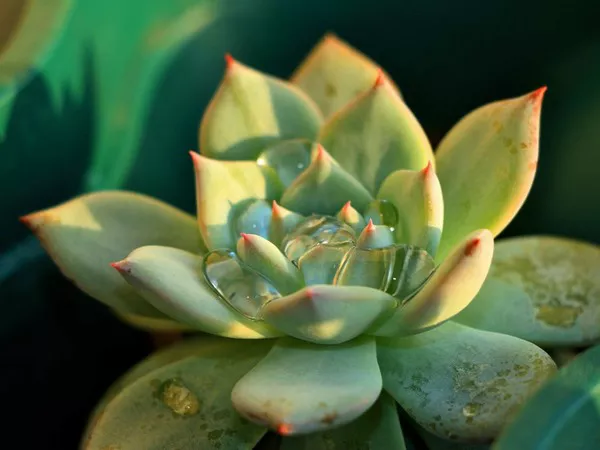Succulents are a popular choice for indoor gardening due to their unique, exotic appearance and low-maintenance requirements. One creative way to showcase these hardy plants is by planting them in a terrarium. A succulent terrarium can be a stunning addition to your home or office, adding a touch of nature to your living space.
Selecting the Right Terrarium
Before you start planting succulents, you’ll need to choose the right terrarium. These glass containers come in various shapes and sizes, from open containers to sealed glass orbs. Open containers work best for succulents, as they provide good airflow and allow excess moisture to evaporate, which is essential for succulent health.
Choosing the Right Succulents
The next crucial step is selecting the right succulents for your terrarium. Consider the following factors:
a. Size: Opt for small to medium-sized succulents that can thrive in the limited space of a terrarium.
b. Growth rate: Select slow-growing succulents to minimize the need for frequent trimming and maintenance.
c. Light requirements: Choose succulents with similar light preferences, as they will share the same environment in the terrarium.
Preparing the Terrarium
Now that you have your terrarium and succulents, it’s time to prepare the container. Follow these steps:
a. Add a drainage layer: To prevent excess water from collecting at the bottom of the terrarium, add a layer of small stones or pebbles. This ensures proper drainage, which is crucial for succulents.
b. Use the right soil: Succulents require well-draining soil to avoid root rot. A cactus or succulent mix, readily available in garden stores, is a great choice.
c. Create a focal point: Plan your design by considering the height and placement of your succulents. Place taller succulents towards the back of the terrarium for a visually appealing arrangement.
Planting Succulents
With your terrarium prepared, it’s time to plant your succulents. Follow these steps to ensure a successful planting:
a. Gently remove the succulents from their nursery pots, being careful not to damage the roots.
b. Dig a small hole in the soil, and place the succulent inside, making sure it’s firmly planted. Leave enough space between succulents to allow for growth.
c. Add more soil around the succulents to secure them in place. Be gentle to avoid damaging the roots.
Caring for Succulents in a Terrarium
Succulents in a terrarium require specific care to ensure their well-being. Here are some key points to keep in mind:
a. Water sparingly: Overwatering is one of the most common mistakes in succulent care. Water your terrarium only when the soil is completely dry, and then water thoroughly, allowing excess water to drain out.
b. Provide adequate light: Succulents need plenty of bright, indirect light. Place your terrarium in a location with filtered sunlight, such as near a window, to ensure your succulents receive the light they need.
c. Avoid direct sunlight: While succulents love light, they can get sunburned if exposed to direct, intense sunlight for extended periods. Protect them from harsh rays, especially in hot climates.
d. Pruning and maintenance: Keep your succulents in check by trimming overgrown or damaged leaves. Remove dead or rotting plant material to maintain a clean and healthy terrarium.
e. Fertilize sparingly: Succulents in a terrarium don’t require heavy fertilization. Use a diluted, balanced fertilizer only during the growing season (typically spring and summer) and reduce or skip fertilization during the dormant season (fall and winter).
Dealing with Common Succulent Issues
Succulents are hardy, but they can still encounter some common problems in a terrarium. Here are a few issues to watch out for:
a. Overwatering: If you notice signs of overwatering, such as wilting or yellowing leaves, reduce your watering frequency.
b. Pests: Keep an eye out for common succulent pests like mealybugs and spider mites. Remove them promptly using a soft brush or a cotton swab dipped in rubbing alcohol.
c. Etiolation: When succulents don’t receive enough light, they may stretch or become leggy. To prevent this, move your terrarium to a brighter location.
Terrarium Design Ideas
Creating a visually appealing succulent terrarium is an art form in itself. Consider the following design ideas:
a. Color coordination: Mix succulents with different colors and textures to create a visually captivating display.
b. Layering: Use various heights and sizes of succulents to create a sense of depth within the terrarium.
c. Decorative elements: Add decorative elements like small stones, sand, or miniature figurines to enhance the overall look of your succulent terrarium.
d. Different container options: You’re not limited to traditional glass containers. Experiment with unique vessels like teacups, glass cloches, or even old light bulbs for a one-of-a-kind terrarium.
Conclusion
Planting succulents in a terrarium is a rewarding and creative endeavor that allows you to enjoy the beauty of these unique plants in a controlled environment. With the right terrarium, suitable succulents, and proper care, you can create a miniature desert landscape that will thrive and bring a touch of nature to your space. Succulents in a terrarium are not just plants; they’re living works of art waiting to be crafted by your green thumb.


